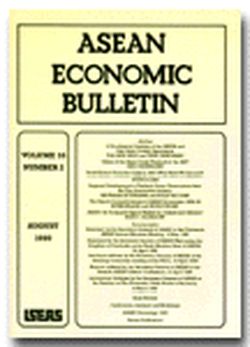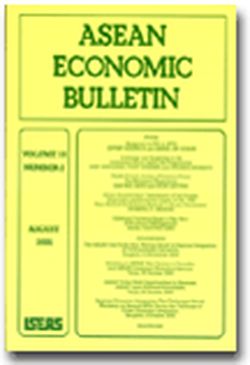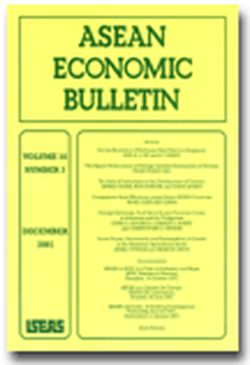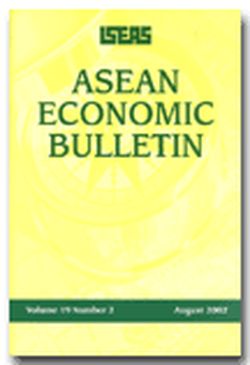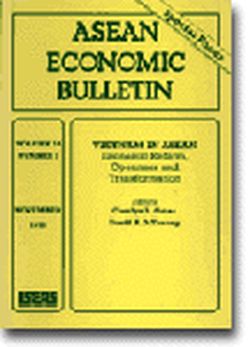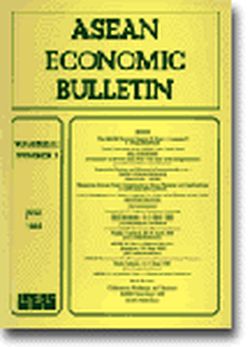ASEAN Economic Bulletin Vol.17/1 (Apr 2000)
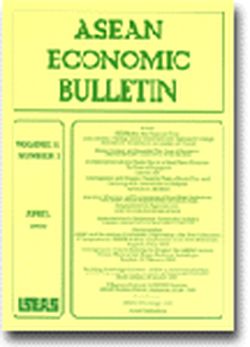
Date of publication:
April 2000
Number of pages:
112
Code:
AE17/1
Contents
-
Preliminary Pages, by Jessie P H Poon, Edmund R Thompson, authors
-
ASEAN after the Financial Crisis: Links between Foreign Direct Investment and Regulatory Change, by Edmund R Thompson, Jessie P H Poon, contributors see abstractUsing data gathered directly from Japanese, European and U.S. firms with investments throughout ASEAN, this article shows that multinational firms uniformly anticipated Asian crisis-induced reforms that would beneficially affect overall investment environments. It also demonstrates significant correlations between reform expectations and anticipated improvements in the ASEAN investment environment. Differences between Japanese and European/U.S. firms are highlighted, and the article concludes that reforms should be progressed as fully and swiftly as possible to safeguard FDI flows and thereby help to ensure that recovery is sustained.
-
Money, Output and Causality: The Case of Singapore, by Ong Chin Huat, David Wan Tai Wai, contributors see abstractThis study presents a causality test between money supply (M1, M2 and M3) and GDP for Singapore, using the co-integration methodology. The results show that money supply and GDP are co-integrated. Granger causality concludes a two-way causality for M1 and GDP; unidirectional causality is found from GDP to money supply for both M2 and M3. The empirical findings lend support to the framework whereby changes in income lead to changes in money supply, other things being equal. The results are also in line with the characteristics of a small and open economy like Singapore, whereby external factors are more likely to explain output fluctuations than monetary policy.
-
Analysing International Trade Data in a Small Open Economy: The Case of Singapore, by Rahul Sen, contributor see abstractThis article analyses the issue of differences in the measurement of international trade flows at a bilateral level in the context of Singapore. Using the Trade Difference (TD) Statistic à la Blades and Ivanov (1985), discrepancies in reported international trade data for Singaporeâs trade with some important trading partners have been analysed. The analysis suggests that the bilateral trade data of highly trade-oriented economies like Singapore needs to be interpreted carefully, and there is a need to separate out Singaporeâs entrepôt trade function when analysing the bilateral trade data, and in drawing any policy implications. However, this factor is unlikely to be the sole cause for inconsistencies in reported trade data, given the range of sources from where such discrepancies may arise.
-
Co-integration and Granger Causality Tests of Stock Price and Exchange Rate Interactions in Malaysia, by Mansor H Ibrahim, contributor see abstractThis article analyses the issue of differences in the measurement of international trade flows at a bilateral level in the context of Singapore. Using the Trade Difference (TD) Statistic à la Blades and Ivanov (1985), discrepancies in reported international trade data for Singaporeâs trade with some important trading partners have been analysed. The analysis suggests that the bilateral trade data of highly trade-oriented economies like Singapore needs to be interpreted carefully, and there is a need to separate out Singaporeâs entrepôt trade function when analysing the bilateral trade data, and in drawing any policy implications. However, this factor is unlikely to be the sole cause for inconsistencies in reported trade data, given the range of sources from where such discrepancies may arise.
-
Learning Behaviour and Co-operation of Small High Technology Firms in the ASEAN Region: Some Evidence from Singapore-Johor Agglomeration, by Dimitrios Konstadakopulos, contributor see abstractThe article analyses the interactions between stock prices and exchange rates in Malaysia, using bivariate as well as multivariate co-integration, and the Granger causality test. In the analysis, three exchange rate measures are used: the real effective exchange rate, the nominal effective exchange rate, and the RM/US$ rate. Although there is no long-run relationship between the exchange rate measures and stock prices in bivariate models, there is evidence of co-integration when the models are extended to include M2 money supply and reserves. The findings indicate that in the short run, a concerted stance on monetary, exchange rate and reserve polices is vital for stock market stability. These results also indicate informational inefficiency in the Malaysian stock market.
-
Productivity in the Indonesian Automotive Industry, by Yumiko Okamoto, Fredrik Sjoholm, contributors see abstractIndonesia, like many other countries in Southeast Asia, has actively promoted the automotive industry. The governmental interventions have ranged from tariffs and non-tariff barriers to various local content programmes. As a result, imports of ready made cars and motorcycles have been expensive, which led to an inflow of foreign producers. This article examines productivity performance in the Indonesian automotive industries. More specifically, it addresses two questions. Firstly, has the industry left the âinfant industryâ status? Secondly, what roles have multinational enterprises played in the development of the automotive industry in Indonesia? In examining the issues at hand, establishment data for the Indonesian automotive industries between 1990â95 is used. The methodology examines the dynamics of the different sub-sectorsâ productivity performance: which establishments account for most of the productivity growth, and how important entry and exit of establishments are to the overall performance.
-
DOCUMENTATION: ASEAN and the Andean Community: Cooperating in the New Millennium. Presentation of H.E. Rodolfo C. Severino, Secretary-General of the Association of Southeast Asian Nations, at the 1st Symposium on ASEAN-Andean Cooperation in the New Millennium, Bangkok, 8 May 2000
-
DOCUMENTATION: Developing the Greater Mekong Sub-Region: The ASEAN Context. Statement of H.E. Rodolfo C. Severino, Secretary-General of the Association of Southeast Asian Nations, at the Greater Mekong Sub-Region Business Workshops, Bangkok, 10 February 2000
-
DOCUMENTATION: Building Knowledge Societies: ASEAN in the Information Age. Keynote Address by H.E. Rodolfo C. Severino, Secretary-General of the Association of Southeast Asian Nations at the ASEAN Regional Workshop on Building Knowledge Societies, Kuala Lumpur, 26 January 2000
-
DOCUMENTATION: A Regional Outlook for ASEAN Business. Address by H.E. Rodolfo C. Severino, Secretary-General; of the Association of Southeast Asian Nations at the Luncheon Hosted by the ASEAN Business Forum, Singapore, 22 July 1999
-
BOOK REVIEW: Singapore: Towards a Developed Status. Edited by Linda Low, by Atiur Rahman, contributor
-
BOOK REVIEW: Competitiveness of the Singapore Economy: A Strategic Perspective. Edited by Toh Mun Heng and Tan Kong Yam, by Renuka Mahadevan, contributor
-
BOOK REVIEW: A Siamese Tragedy. By Walden Bello, Shea Cunningham and Li Kheng Poh, by Nick J Freeman, contributor
-
BOOK REVIEW: French and Japanese Economic Relations with Vietnam Since 1975. By Heinrich Dahm, by Sukhvinder Singh, contributor
-
ASEAN Chronology 1999 and Recent Publications

